Our trackbed gang has been working hard, completing all the tree work before the bird nesting season. Clearing up can be done later. The plan is to have the westernmost 20 chains of our land in as good condition as the easternmost, so that the country walk (the site of the future new railway embankment and track) here matches the 1879 trackbed (the eastern section) in quality and species diversity. John B has again provided potatoes baked in the ashes of the dead-wood fire – very welcome in the cold and wet weather. One of our members has put up nesting boxes for tree sparrows, one of many species that we wish to encourage.
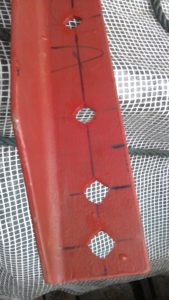
A contender for the most boring pic ever – hand-filed holes
At the workshop one gang has been repairing and re-organising the timber store, so that our large stock of seasoned timber (mostly donated) can be stacked allowing individual pieces to be easily reached. The Wagon 41 team (professional section) has had the metalwork welded, with floor/underframe completion only awaiting timber painting. The body team (not perhaps quite so professional) has had an interesting time with the ends. Those who don’t want to hear the excruciating detail, look away now.
The wagon ends are each made up of five 8” x 1½” planks, with the top two curved. That meant assembly so that the radius (luckily a simple curve, not a parabola or an ellipse) could be marked out, using a trammel (well, a piece of wood with a nail at one end and a pencil at the other, really).
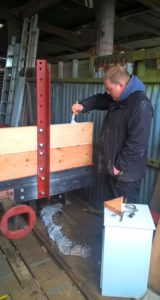
Then a jigsaw cut the curve (VERY slowly – it’s good wood). Then, disassembly again, so that the steel straps inside could have their coachbolt holes marked out. Then, as they are not EXACTLY all the same, they have to be kept marked for each use. OK so far? Then each 80mm x 6mmm steel angle has to be prepared to accept the squares on the coachbolt heads. We don’t have equipment to do that, so it’s a matter of hand-filing squares in each of the holes – i.e. 4 filings per hole, on 40 holes, making 160 filings. This seemed to be a homework job, so the chairman (who is after all responsible for the Heritage Train idea, so must suffer the consequences) took the steel home.
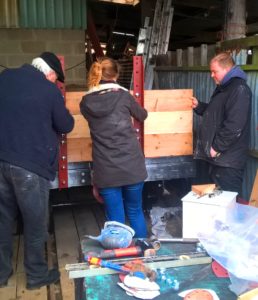
Visitors to Southwold might well have overheard several days of cursing about barked knuckles, the whirring of an overloaded hoover dealing with the filings irretrievably enmeshed in the carpet, and the odd sound of someone counting down (“that’s 14 filings done – only 146 to go”). The more filing, the more worn the file is, of course, so each takes longer (there is doubtless a point at which there are diminishing returns).
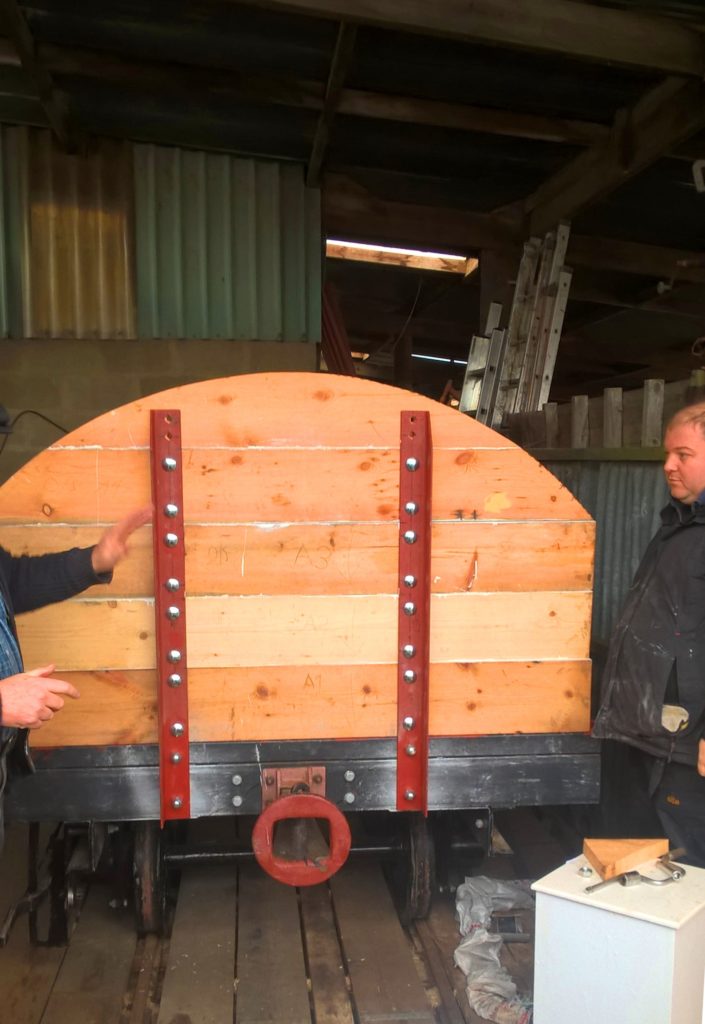
Anyway, to cut a (very long) story short, on Saturday 25th a team of 4 permanently erected one of the ends, using the usual SR method of very large hammers and even larger spanners. The (possibly over-ambitious) idea was that the ends would be both removable and inter-changeable, so that this wagon can also be used as a flat, to carry rail or long timbers. Thus another interesting time was had marrying up bolts and bolt holes (20mm, these, as there’s a lot of weight). Naturally, despite all the careful measuring, they did not exactly fit, but could be made to, using hole cutters and the aforementioned large hammers.
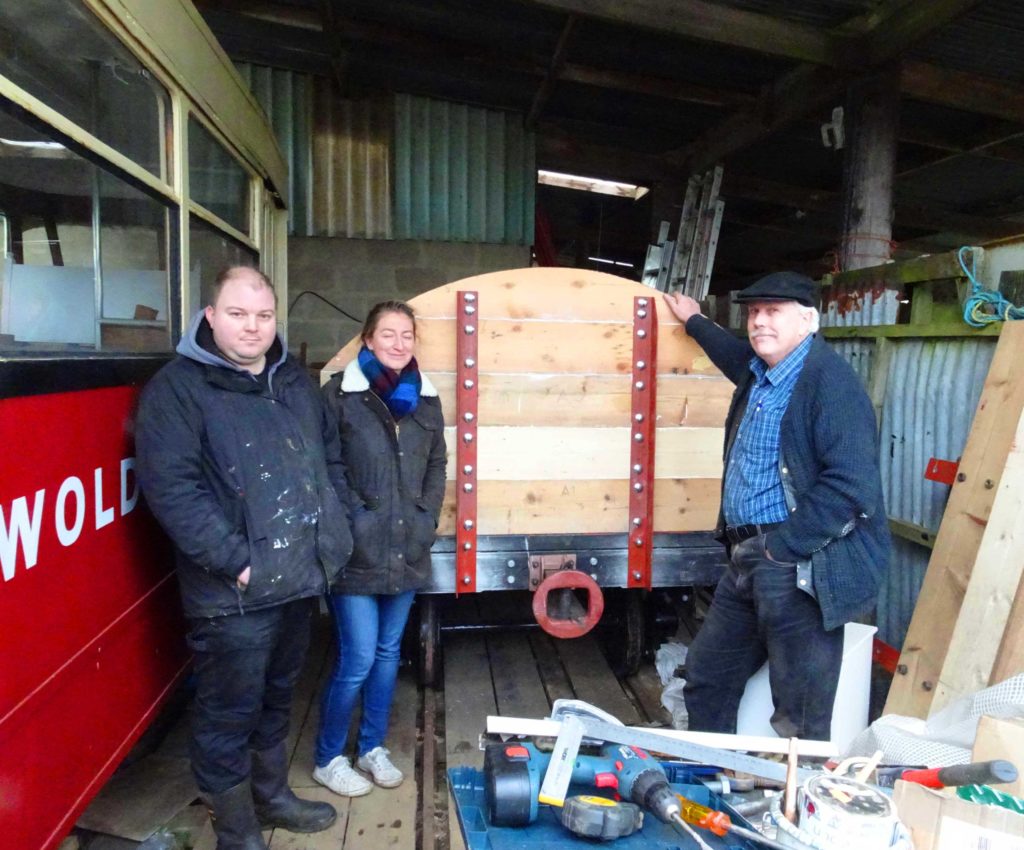
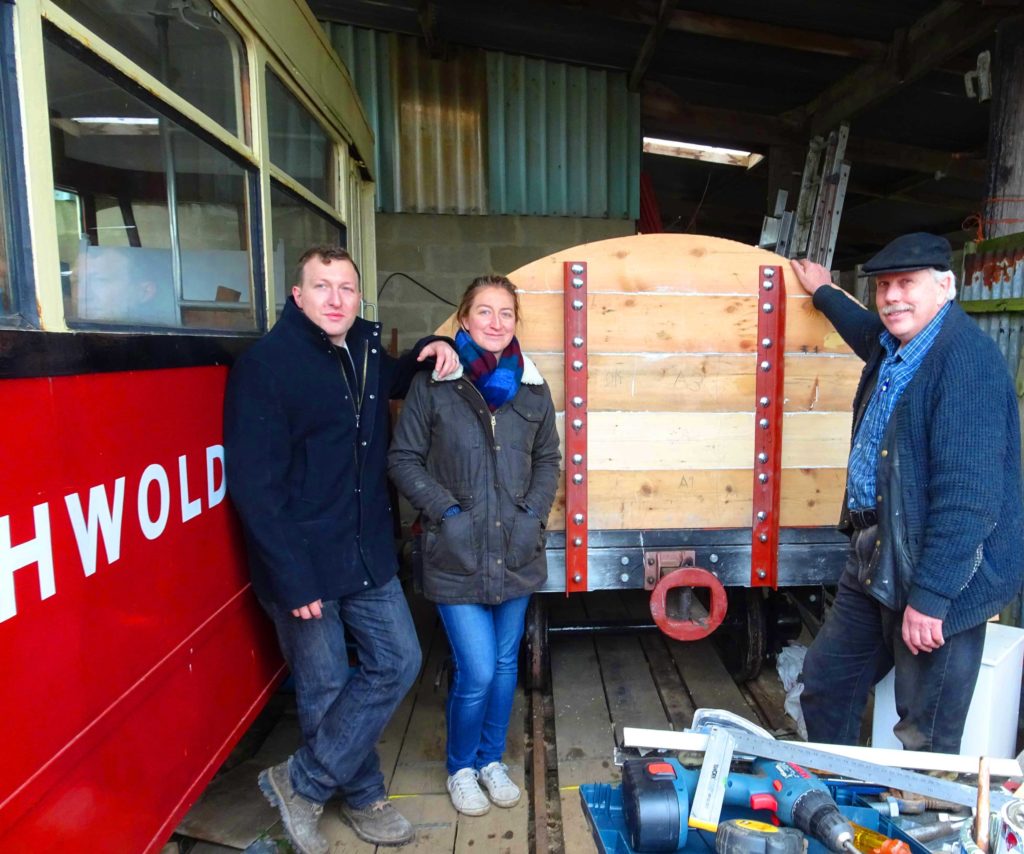
In the end, it was assembled, it fitted, and it is upright! Naturally, it all had to come off again, to allow the underframe guys access to their work – but it’s a milestone, and with the curved top standing at about 6 feet from the rail heads, quite a big beast for the narrow gauge.
The SOLD workshop in Lowestoft (who have already done most of the assembly on the doors for Van 40) are planing down two more pieces of donated timber for the second open-wagon end, at which point the (probably sore and irritable) chairman will arrive toting the second set of stanchions for it, doubtless filed square in a rather slap-dash way (but no-one will see it). Final erection, planing down the sides (which have been left slightly oversize), and painting in SR grey will follow.
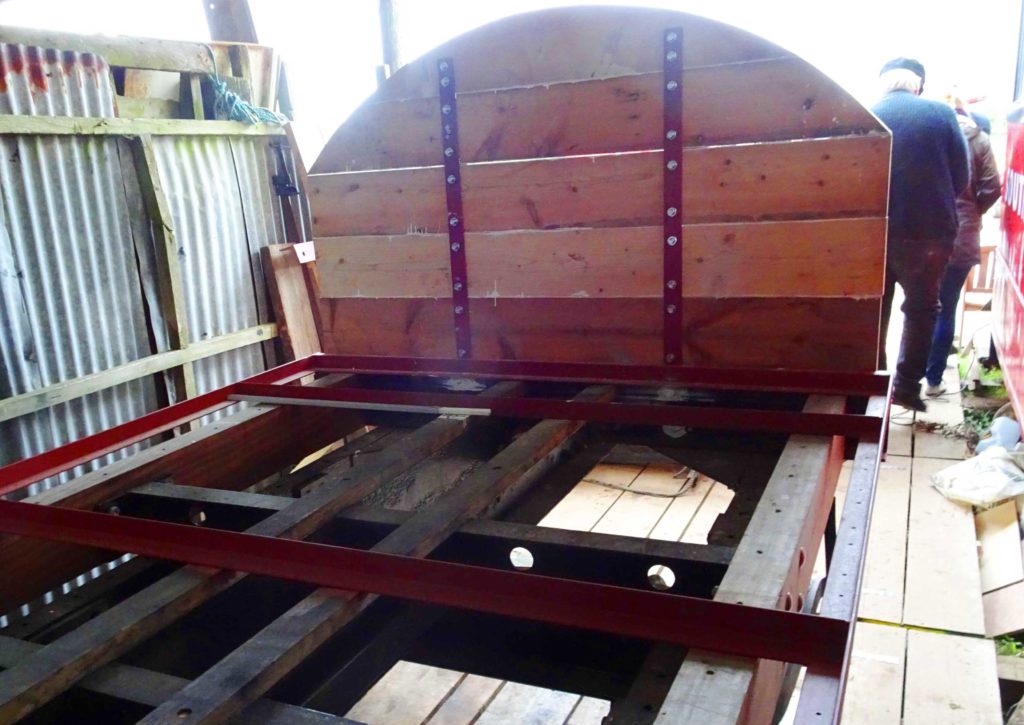
By that time, Peggs (Aldeburgh) will have done the 6 massive hinges, allowing the sides to be added. As was common practice with timber wagons, the SR opens had steel liners all around the top, which will be fixed with hefty woodscrews through another 50-or-so drilled, countersunk holes – fun for all.
The land purchase legal process in Southwold still continues – but we hope to announce SRT ownership soon.
(All pics – Robin and Ben)
